BALTIMORE BEFORE THE 1950s
WAS A SEGREGATED SOUTHERN TOWN
THAT HAS INTEGRATED EXCEPTIONALLY WELL
Race, poverty and turmoil in the mix
(A personal perspective)
————— ————— —————
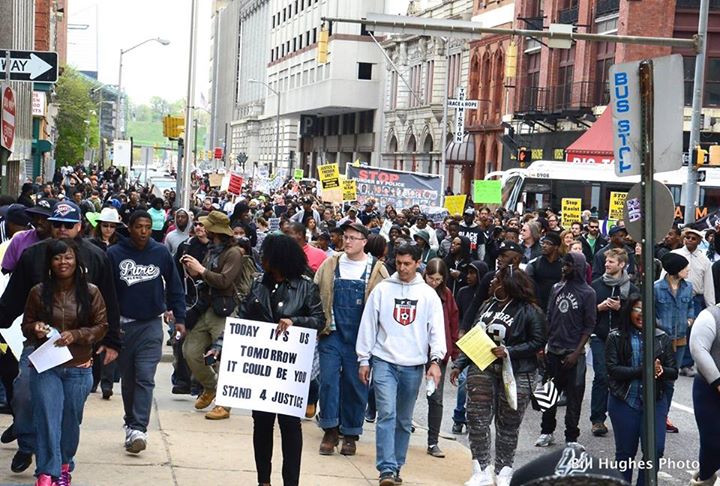
Protesters march in Baltimore during city’s most violent week since the assassination of Rev. Martin Luther King Jr. in 1968. The April 2015 demonstrations were orderly
and predominantly peaceful. (VoB file photo/Bill Hughes)
NEW MILLENNIUM ‘CHARM CITY’
IS NOT THE RACIALLY BIASED REGION
OF THE EARLY-MID 20th CENTURY
An age long gone when children walked to school,
when inner-city neighborhoods were safe & secure;
when race and ethnicity served as a dividing line
CHARLATANS LIKE SHARPTON
‘No Dogs or Jews’ at Meadowbrook
By Alan Z. Forman
In the wake of the death of Freddie Gray at the hands of Baltimore police, followed by over a week of peaceful demonstration punctuated by little more than a day of rioting and looting, it has become popular for politicians, national media and various and sundry activists to analyze and demonize the City of Baltimore for its failure to be perfect.
To say that Baltimore in 2015 is wracked by poverty and murder would certainly be an understate- ment, and to include these among the causes for the conflict is obvious. But this is only part of The B’more Story and totally ignores the good side of this quintessential New Millennium city that is struggling to right the wrongs of its provincial Southern past.
I grew up in segregated Baltimore at a time when blacks and Jews hesitated to enter Roland Park and Guilford, even Towson; when Meadowbrook Aquatic & Fitness Center, where Olympian Michael Phelps now trains, had a sandwich-board sign near its entrance, warning prospective patrons: “No Dogs or Jews” allowed.
It didn’t have to say “No Blacks”; that was understood.
Upscale Baltimore neighborhoods like Homeland, Roland Park and Guilford had covenants in their deeds restricting the sale of homes to WASPy families only.
Polish Baltimoreans lived in Highlandtown and Canton; Italians lived in Little Italy. Blue collar families were in Curtis Bay, Fells Point and Westport, and outside the city limits in areas such as Essex and Dundalk. Blacks were not allowed to live in Hampden.
“Negroes,” as Supreme Court Justice Thurgood Marshall famously identified himself late in life when a reporter apologized for not referring to him as “black,” lived predominantly in West Baltimore, mostly below North Avenue, which was once the northernmost boundary of the city.
HARDLY A MAJORITY IN BALTIMORE
They were hardly a majority in Baltimore as they are now. However the “separate but equal” African-American school system of the day was far superior to the integrated schools of the current era, which are segregated not by race but economics.
Handouts weren’t expected. And black families, before Lyndon Johnson’s Great Society, included a wife with a husband who was a live-at-home father to their children.
Charlatans like Al Sharpton had not yet drained the concept of personal responsibility away by preaching a culture of victimhood/entitlement and demonizing education as “acting white” in lieu of providing a way out of the ghetto.
To such so-called leaders, “Black Lives Matter” only in the relatively few instances where police are involved and there’s political gain to be had — not the wholesale day-to-day killings of blacks by other blacks, which comprise the daily news fodder.
Baltimore Mayor Stephanie Rawlings-Blake correctly pointed this out not long ago but has had little to say on the subject since.
Nor has granting Section 8 housing vouchers to enable poor families to move into affluent neighborhoods done anything to improve the overall lot of the disadvantaged. U.S. Sen. Barbara A. Mikulski was instrumental in blocking that idea, recognizing that when people have no personal stake in a property, they have little or no incentive to take care of it.
Prior to the Great Society, drugs were not nearly as big a problem anywhere as they are today, although marijuana and heroin were certainly both out there. However cocaine, crack and methamphetamine did not come to Baltimore until later.
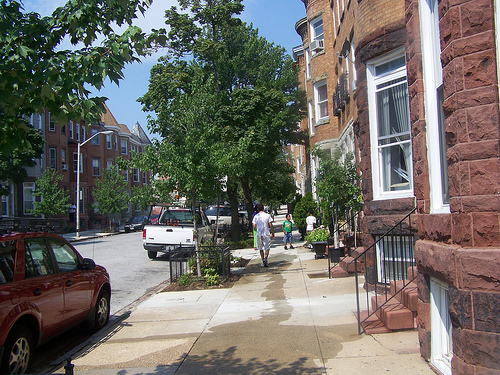
African-American vagrants frequented the all-white Reservoir Hill neighborhood in the 1940s looking for work. The reporter’s mother had no money back then but always gave them a meal, which they would accept only in return for their labor.
Wine and alcohol were common- place.
My mother had no money to give the itinerant African-American vagrants who came around the Reservoir Street neighborhood, often drunk, in the 1940s looking for work, but she always gave them a meal — which they refused to eat until after she found work for them to do as payment.
Our family lived in all-white Reservoir Hill — long before it became known by that illustrious name — and at age five I walked four blocks to school, by myself, except for crossing Brookfield Avenue and Whitelock Street, where I was required on the way home to wait for my mother to arrive and escort me across the intersection, a half-block from our house.
(Mother was always late! keeping me waiting on the corner for what seemed like an eternity but in reality was probably little more than several minutes.)
I was never frightened however; the neighborhood was safe.
On days when Mother was at work — she hosted a three-day-a-week radio show for the May Company department store on WCAO — I walked alone to my grandfather’s house on Reservoir Street, to which even at my tender age I had a key.
On January 20, 1949 I was allowed to leave school at midday to go to my grandfathers’ to watch the inauguration of Harry Truman on TV, who the previous November had defeated Thomas E. Dewey in the presidential upset of the century. (We’ve all seen the famous photo of Truman raising the Chicago Daily Tribune above his head, displaying the headline “Dewey Defeats Truman”; it’s in all the high-school history books.)
My parents and the school thought nothing of allowing an eight-year-old to be in an empty row house at noon, alone, watching television, and then returning to school unescorted after lunch to report to classmates on the inauguration.
The schools did not have television sets in 1949. My grandfather had one of the first available, a four-inch-diagonal Philco table-model, housed in a bulky case some 15-20 times the size of the screen, and with aerial wires strung all around the room.
WHITE PARENTS DEMONSTRATED OUTSIDE CITY COLLEGE
I went to segregated schools until 10th grade; I remember the day the Baltimore Public Schools were integrated, in September 1954, when white parents demonstrated in protest on the hill outside City College.
There was no violence that day, and few if any students were involved. The integration of public schools in Baltimore was smooth and uneventful in the beginning, unlike many of the violent protests that occurred in other cities. Although the later period of forced busing here did not go quite as smoothly.
Maryland’s Eastern Shore experienced far more turmoil. Segregationist Alabama Gov. George Wallace defeated incumbent Lyndon Johnson in that area in the presidential primary of 1964, and the “Shore” remained a bastion of segregationist sympathy for decades hence.
Today, however, the locale of Pokomoke City, for example, in Worcester County — which calls itself “the friendliest town on the Eastern Shore” — in a region where blacks were unwelcome as recently as the 1960s and ‘70s, has an African-American police chief, who told Voice of Baltimore it’s a better place to work than Baltimore City.
That police chief, Kelvin Sewell, spent the bulk of his career as a homicide detective in Baltimore, where he worked on some of the city’s most gruesome and horrific murder cases.
His book on murder in Charm City, Why Do We Kill? — co-written by investigative reporter Stephen Janis and edited and co-published by Baltimore True Crime and Voice of Baltimore — deals with the underlying causes of the high crime rate in Baltimore, where it has become popular in the last month or so by outsiders and State of Maryland residents alike to assign blame to former Gov. Martin O’Malley, who instituted a no-tolerance police policy in the city when he was Mayor before moving on to Annapolis.
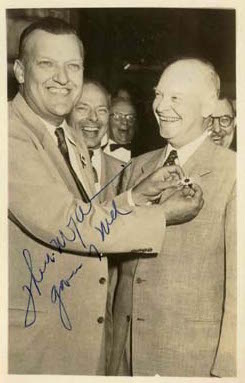
Theodore R. McKeldin, left, shown here pinning a Black-Eyed Susan, Maryland’s state flower, on the lapel of President Dwight D. Eisenhower, is the only Republican in more than 100 years to serve as both Mayor of Baltimore and Governor of Maryland. As Maryland Governor, McKeldin gave Eisenhower’s nominating speech at the GOP convention in 1952.
African-Americans, many of them teenagers, were arrested during that period for virtually every major and even minor offense imaginable, thrusting large numbers of otherwise innocent young men into the criminal justice system and saddling them with an arrest record that made it all but impossible for them to ever go straight.
Theodore Roosevelt McKeldin was Mayor of Baltimore back in the 1960s when integration was in its early stages here, the only Republican to be elected in Charm City in the last 80 years, and one of only four members of the GOP since 1916 to serve as Governor of Maryland during the near-century-long time span preceding current GOP Gov. Larry Hogan, who defeated O’Malley’s lieutenant governor last November.
Then, as now, Democrats controlled the state and city, making it easy to blame Baltimore’s current woes on the party of Franklin Roosevelt, John F. Kennedy and Lyndon Johnson — although politically-correct WBAL-TV is currently running television news promos featuring scenes of peaceful marches during the week of April 27th following the day or two of looting, burning and rock- and bottle-throwing at Baltimore police, with voiceovers of Robert F. Kennedy calling for non-violent demonstration.
As if Bobby Kennedy ever had anything to do with Baltimore. His closest connection was posthumous: the election of his oldest daughter, Kathleen Kennedy Townsend, as Maryland Lieutenant Governor in the 1990s.
It’s rarely if ever mentioned that Baltimore has been led exclusively by Democrats since 1936, with the exception of McKeldin’s two terms as Mayor, one in the 1940s, the other in the ‘60s, bookending his consecutive terms as Governor between 1951 and ’59.
(Democrat Hyman A. Pressman was elected to his initial term as City Comptroller on McKeldin’s Republican ticket in 1963 but remained a Democrat for the duration of his political career through 1991, despite running unsuccessfully for governor as an Independent in 1966.)
Baltimore has elected Democrats great and good, from the two D’Alesandros, father and son, to William Donald Schaefer, Martin O’Malley, Kurt L. Schmoke and even Sheila Dixon, who is currently giving every signal she intends to run for mayor again next year.
The elder D’Alesandro, Tommy Jr., now deceased, whose daughter Nancy Pelosi is a former Speaker of the U.S. House of Representatives, spearheaded the Baltimore renaissance of the 1950s that began with the iconic Charles Center Project and extended to the preservation of downtown neighborhoods, including Federal Hill and Otterbein, via innovative Urban Homesteading whereby dilapidated houses were sold by the city for $1 and restored instead of being torn down.
And of course the Inner Harbor development and Camden Yards sports complex under Schaefer’s watch, which has transformed Charm City into a tourist attraction.
The $1 Urban Homesteading program became a model that was copied by other cities nationwide.
DIXON RECEIVES STANDING OVATION
At a recent event to push for construction of the proposed Light Rail Red Line, where Democrats showed solidarity in promotion of the peaceful rebuilding following the burning and looting of a CVS store at North and Pennsylvania Avenues, and the rock and bottle ransacking of Mondawmin Mall — which some in the inner city refer to as “Murder Mall” — and the spillover into other areas bordered by North Avenue, elected officials including Congressman Elijah Cummings (who ives in the North & Pennsylvania Avenue neighborhood), Mayor Stephanie Rawlings-Blake and City State’s Attorney Marilyn Mosby received polite applause when they were introduced to speak.
Attendees reacted similarly at the funeral of Freddie Gray. Politicians and others, including Rawlings-Blake and Cummings, Rep. John Sarbanes, Jesse Jackson, and former Rep. Kweisi Mfume — who headed the NAACP before resigning in the wake of sexual misconduct charges — received polite applause.
But it was former Mayor Dixon, who resigned in disgrace five years ago after being convicted of stealing $500 worth of Christmas Gift Cards intended for the poor, who received a standing ovation when she was introduced to the large gathering.
Dixon drew such rousing and sustained applause that she had to ask the crowd for it to end.
Not that one can legitimately blame the Democrats for all of Charm City’s problems, but who’s to say the Republicans might not have done a better job?
At the very least, there can be little doubt that Baltimore, or any city, would have been better served historically by two-party rather than single-party rule. States as well, as the deep South learned after many decades of one-party Democratic rule from the Civil War until the Eisenhower Administration of the 1950s.
Everybody credits McKeldin’s exemplary record as a benchmark. He was Democratic President Lyndon Johnson’s first choice to be Mayor of Washington, D.C. in 1967 when that city was first granted home rule and the initial mayor was appointed by the President.
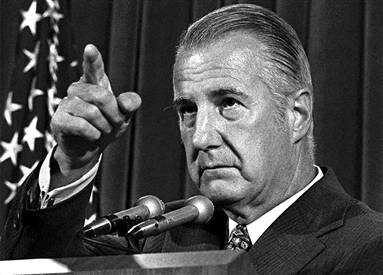
Maryland Gov. Spiro T. Agnew ascended to the vice presidency after publicly lambasting Baltimore’s African-American leadership for not doing anything to quell the 1968 riots following the assassination of Rev. Martin Luther King Jr. Agnew was later driven from office as Vice President and resigned in October 1973 for accepting bribes dating back to his tenure as Governor of Maryland.
Now deceased, McKeldin reluctantly declined LBJ’s offer because of ill health.
In 1968 when Martin Luther King was assassinated, and Baltimore City erupted into chaos — far worse, by the way, and longer-lasting than anything that occurred in the recent wake of the death of Freddie Gray — then-liberal Republican Gov. Spiro Agnew rose to national prominence by publicly lambasting local black leaders for not condemning the riots that ensued.
I was one of many Baltimore Sun reporters who covered those riots, and was forcibly detained on several occasions by the police for being out on the streets after curfew, including a not-so-pleasant ride in a police paddy wagon à la the trip that apparently killed Freddie Gray.
Rides in Black Marias are unpleasant experiences for everybody, whites as well as blacks.
Some of the cops were not so nice back then, and not just to blacks. On a subsequent occasion some years later I was racially profiled near Frederick Avenue on the West Side for driving through a drug-infested African-American neighborhood, checking out the streets regarding a pizza-delivery business a friend and I were looking into buying.
White guy driving through drug-dealing African-American neighborhood. Duh!
The cop, who happened to be black, apologized once he realized I was not there to buy contraband. But I felt pretty stupid for giving him cause to profile me, even though profiling was against police policy even then.
I nonetheless cooperated fully when ordered to get my hands out of my pockets and lean against the car so he could frisk me.
Was he “disrespecting” me by aggressively barking out orders? Maybe… probably. However I knew I didn’t have a gun in my pocket — but he didn’t.
Should he have been more polite? and not so confrontational? Sure. But I’m not black and hadn’t been similarly disrespected by police my entire life, so I didn’t take offense.
I apologized to him.
ANIMOSITY EXTENDED FOR YEARS AFTER KING’S ASSASSINATION
The black/white animosity that roiled to the surface in the wake of the King assassination, extending into years, was likely the worst Baltimore has ever seen, before or since, including now.
By contrast, for most Baltimoreans, whatever animosity, racial or otherwise, that exists today is mostly directed specifically at police, for better or for worse, yet not so much between blacks and whites.
Still, the animosity is misplaced. Because the vast majority of Baltimore’s cops are good and decent public servants, serving honorably and dedicating their lives and careers to helping make Charm City a better place for all of us to live.
The Baltimore Police Department does not deserve the treatment it is getting because of a small number of bad apples in its midst. Nor is Mayor Rawlings-Blake totally to blame, despite her mishandling of the violent events of the week of April 27th and her inexplicable lapse in not requesting state assistance — i.e., the presence of the National Guard — to prevent the burning and looting that week before it started.
Plus the cops should not be stereotyped any more than any other segment of our population deserves to be.
Nonetheless those who are overzealous in the performance of their duties need to be reined in and held accountable wherever necessary — although that does not include over-charging them with crimes to appease an electorate for the 2016 mayoral campaign coming up next year.
‘WILL I COME HOME ALIVE TODAY?’
As citizens we need to keep in mind that when we get up in the morning and go to work, few if any of us are forced to stop and wonder, “Will I come home alive today?” as police officers must contemplate every day of their working lives.
Despite the current propensity of the national media — including a scathing editorial in the New York Times — to criticize Baltimore and negate nearly all that is good and great about our city, B’more has integrated exceptionally well compared to most large cities in the United States with mixed populations.
The unfavorable comparison of Baltimore to Boston, for example, as reported last week in the Boston Globe by a former Charm City resident and ex-reporter for the Baltimore Sun and Bloomberg News, ignores the fact that Baltimore had peaceful demonstrations during the early Civil Rights Movement of the 1950s, ’60s and into the ‘70s (with the exception of the MLK riots of 1968) at a time when Boston and other East and West Coast cities were in utter turmoil.
Not that reporters and editors should be rooters or even advocates for anyone or any thing. But they do have a responsibility to present both, even all, sides of an issue.
When I worked at The Sun many of the reporters were young and idealistic. But if we didn’t present opposing viewpoint/s in our stories, the editors raked us over the coals and embarrassed us in front of our colleagues — who then needled us about our omission even more. Advocacy journalism was frowned upon.
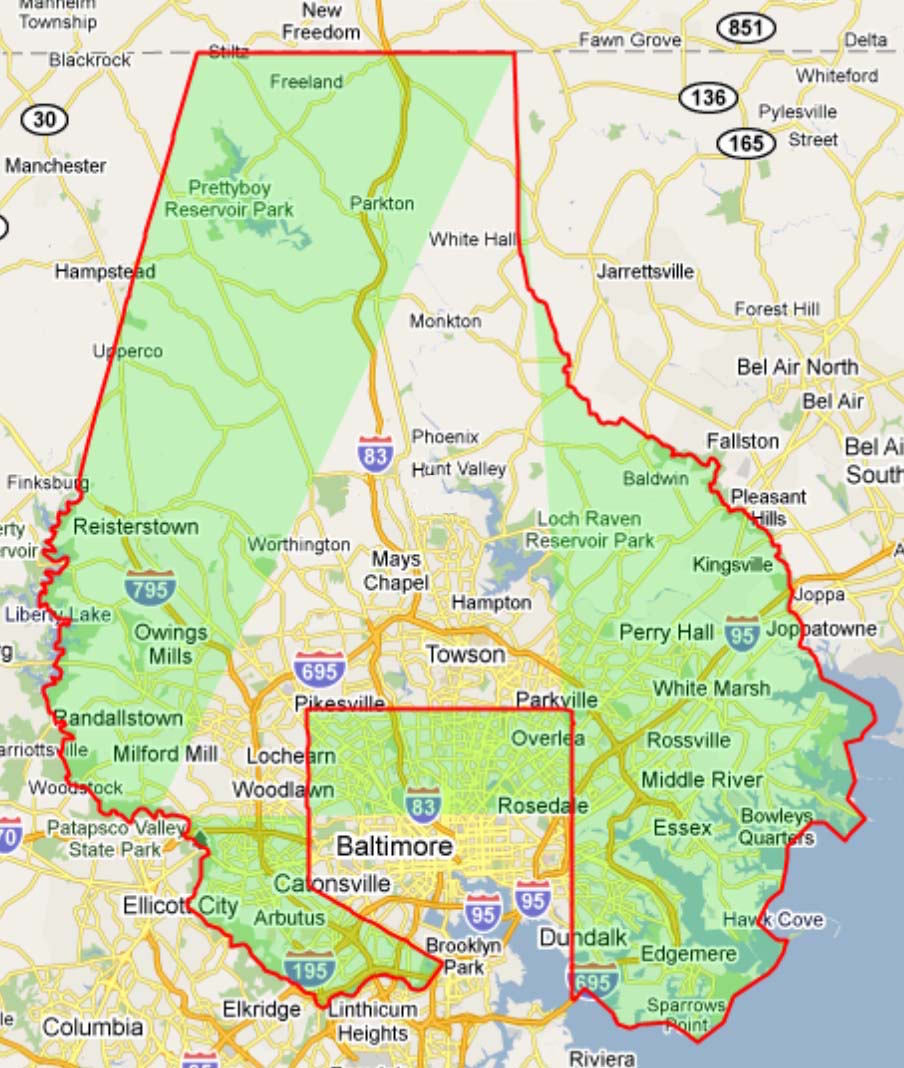
Baltimore City is surrounded by the county on 3 sides and encircled by Interstate 695. It is relatively unique among U.S. cities in that it is not located in a county.
Baltimore is relatively unique among American cities in that it is not situated in any county; there are only a handful of U.S. cities with such status, making it difficult to compare Baltimore with most other urban centers, whose structure is dissimilar.
Up to and including the first third of the 20th Century, whenever the city needed to expand, it annexed land from Baltimore County. But when the city’s ability to do that was curtailed, residents who wanted to escape to the distant suburbs were forced to move to Baltimore County and beyond.
Then, in the late 1950s and early ’60s, with the construction of Interstate 695, a/k/a the Baltimore Beltway — or, its official designation: the McKeldin Beltway — an unin- tended side-effect was that the highway served to isolate the city from its Baltimore County suburbs racially, socially and economically.
So if one were to consider Baltimore County, which surrounds the city on three sides, and Baltimore City together, as a greater metropolitan area that is not majority-minority, then it might be possible to make reasonable comparisons between Baltimore and other major U.S. cities.
Considered as such, the metro area encompasses not just the inner city and its suburbs but county neighborhoods in close proximity, such as Towson, Catonsville and Dundalk.
As for the much-heralded B’More Murder Rate as put under a TV microscope in “Homicide: Life on the Street,” “The Wire” and “The Corner,” the rate is artificially high: It’s mostly black drug dealers and gang members killing each other fighting for turf, not simply shooting up the city like a Wild West town.
The Baltimore of “The Wire,” the David Simon TV series that has given Charm City a black eye ‘round the world, is hardly a frontier town with gun battles raging in the streets. Although some sociologists trace the black-gang gunfights of the present period back to the days of Billy the Kid, Doc Holliday, Wyatt Earp and Jesse James.
Yet now a related problem has emerged: The wedge between the city police department and Baltimore’s political leadership, brought on by an ambitious city state’s attorney who doesn’t seem to understand the dire need for good police protection and a favorable working relationship with the BPD, seems to be giving the criminal element and African-American gangs carte blanche for blacks in inner-city Baltimore to shoot and kill even more blacks.
These days the city is segregated not primarily by race and ethnicity but by economic class.
And that’s a black mark against Baltimore that no one seems to know how to erase.
alforman@voiceofbaltimore.org
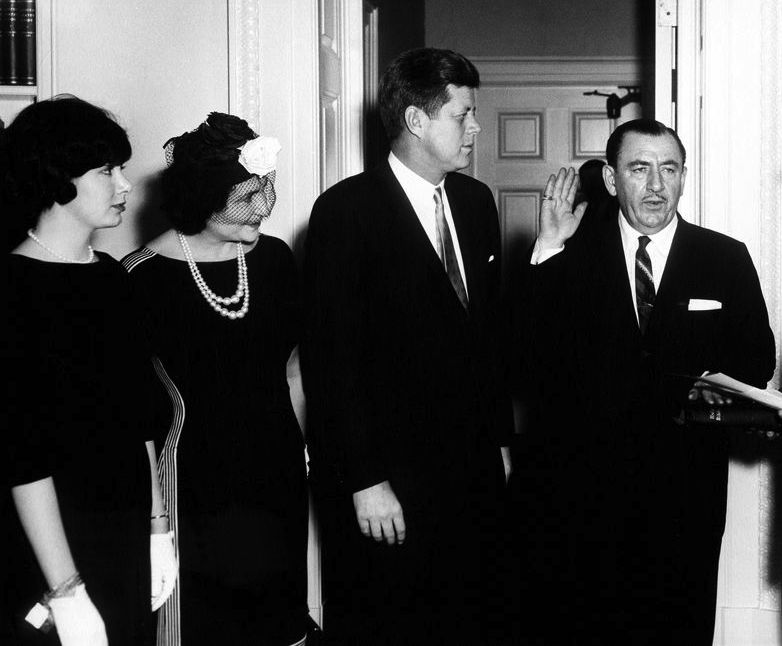
Thomas J. D’Alesandro Jr., right, takes oath in the White House Oval Office in 1961 to become a Member of the Federal Renegotiation Board, as President John F. Kennedy and the former Baltimore Mayor’s wife, Annunciata “Nancy” Lombardi D’Alesandro, center left, look on. At far left is the D’Alesandros’ daughter, future Speaker of the U.S. House of Representatives Nancy D’Alesandro Pelosi, then aged 21.
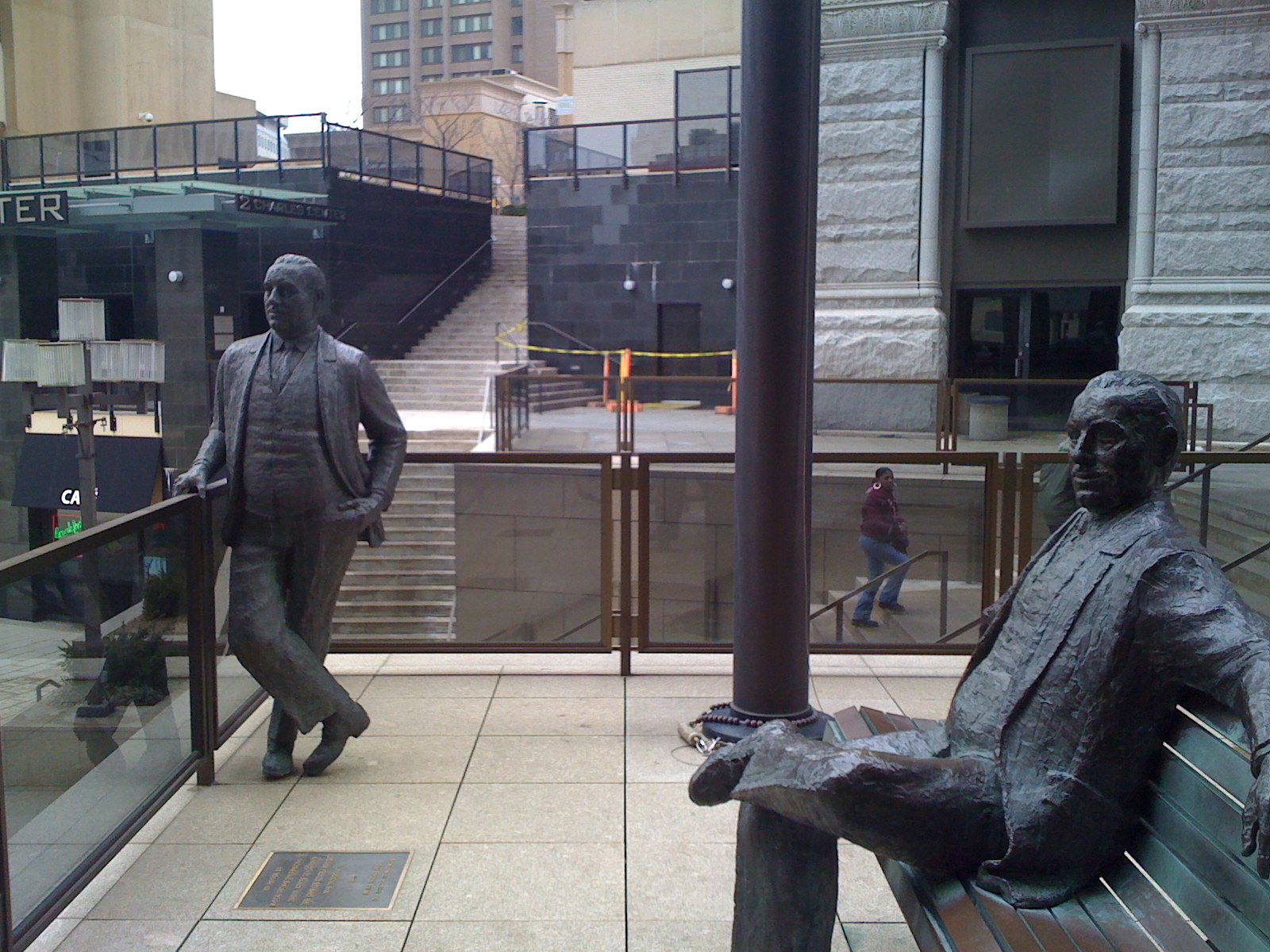
Twin statues of Thomas J. D’Alesandro Jr. in close proximity overlook Charles Center, the start of Baltimore’s post-World War II renaissance the visionary mayor spearheaded in the 1950s. To the right (not shown) is One Charles Center, the initial building of the landmark renovation, designed by international German-American architect Ludwig Mies van der Rohe, who also designed Highfield House, a 15-story concrete tower in the Tuscany-Canterbury section of the city, near Roland Park and Guilford, completed in 1964.


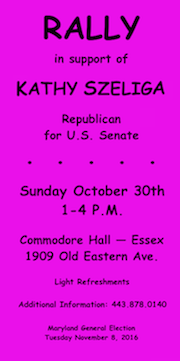

May 21st, 2015 - 2:12 PM
I can only cry when I remember how nice it used to be and realize how bad it is now.
May 22nd, 2015 - 8:52 AM
Thorough and even handed. I, too, grew up in Baltimore, and remember an easy going “downtown” where shoppers of both races mingled easily in the streets and stores. Yes, racists screamed and yelled outside of Baltimore City College when it integrated. Walking through them to school was like running a gauntlet. However, inside the school everything was peaceful and well. Our student body was outstanding in its acceptance of our new students.
June 2nd, 2015 - 12:12 PM
This one really hit me hard when I read it. I LOVED this story. My MIL in particular was among the first group of kids integrated from segregated schools and attended summer school every year to catch up. She mentions it like it’s no big deal, has no ill will about it. Hearing her laugh about the grumpy old man who used to run them off the white playground as though it’s funny, without any anger or feeling any loss makes me feel like I want to be like her. I’m white and it makes ME mad. But not her. She’s so cool and feels little injustices were made against her. I believe her mom, a nurse and a loving person, knew times would change and taught her not to hold a grudge or allow it to bother her. And it didn’t. It doesn’t. I’m angrier than she is when she tells me “funny” stories. Like the time an officer took her to jail on her way to work for not stopping long enough at a stop sign. I freaked out! She just lol at me. I knew that’d never happen to me or my parents. Grrrrr! But I learn from her. She’s a gem!
I cannot WAIT for this book! This piece is incredible! Is there a way to share it to social media?
Thank you kindly for sharing – unabashedly and without holding back – your amazing and legendary experiences! So incredible. So well done. I hope to meet you someday!
June 2nd, 2015 - 1:11 PM
I keep rereading this. I’m overwhelmed. This piece is brilliant and gut wrenching and lovely and every emotion possible wrapped into one ball of a comment.
The city is truly in a state of unrest. More murders than in a century? Police responding slowly to 911 calls? Your words resonate within me because I’ve not understood this and have just prayed for the defenseless folks out there, that they may be safe in a time when it seems those who took an oath might have become followers. We need leaders out there despite lack of the police brotherhood and the repercussions that may come from their brethren for choosing to do the right thing.
2wks ago a cpl of school playgrounds were set a-fire. What a big deal was made of the one in Columbia. What I think nobody knows is that my little girls school for severe autism and other related disorders, though staffed by Kennedy Krieger employees, is still a Balt City Pub school (meaning playground stays open to the public after hours), its playground was burned to a crisp within a day or so of the Columbia fire.
I attended spec Olympics there last week and what a sight. Apparently there were accelerants used & it’s just…beyond. Most will have summer school there. All kids need air. These kids, they don’t understand why they aren’t on swing#3 at x o’clock as routine is a large part of ASD. Seeing some still cry as they looked at their playground last wk was heartbreaking. Watching the amazing teachers and how they handled it with love however, that was priceless.
My mom called to say “they got caught.” (those who set the fire). I looked everywhere. Clearly the kid in Columbia was caught. But as I searched and Googled endlessly I found nothing at all about the blaze itself let alone progress. I expect the school will send a letter home again soon. This has become a teachable moment for kids, some who truly don’t understand these principles yet.
Nevertheless I don’t get it. Here we have this little inner city school w amazing kids doing great things and it’s not being talked about? Found nowhere that I can tell even online? Everyone has heard about Columbia. Perhaps it’s for protection or to ensure no copycats? Honestly I could speculate forever, would do no good.
This is our city. My city. My kids’ city. Our family has over 100yrs here, black and white.
So WHAT IS GOING ON and HOW do we grow from this?
Love and Light!